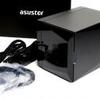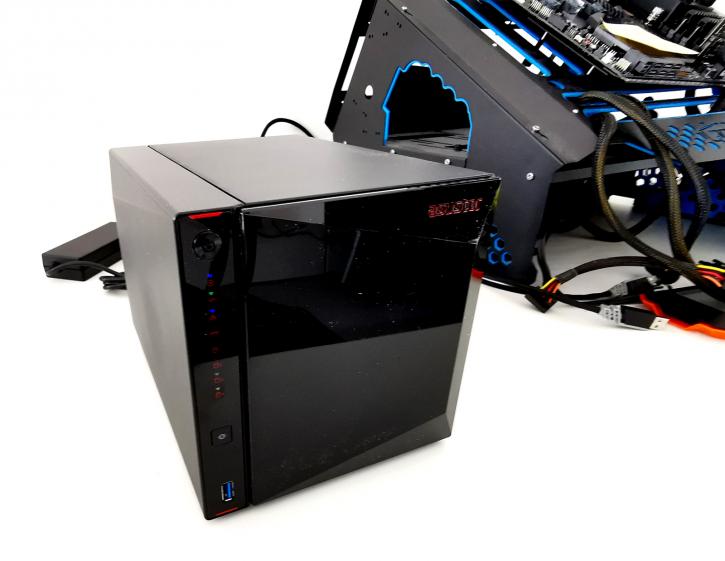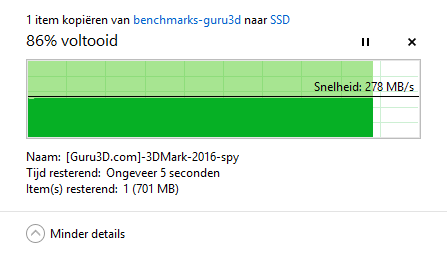Final Words & Conclusion
Conclusion
I've stated it already in the review I've been using Asustor NAS servers in my office for years now, so I do know what I am talking about when I say that they offer one of the, if not the most complete solutions whether you want business features or home and streaming media features. These NAS units can serve it all, you could even make it a KODI movie player NAS over HDMI as next to your TV you will not hear it and pop in a keyboard and mouse and you're good to go (after a bit of installation). So what to do, SSDs or HDDs? Prices of SSDs are getting lower and lower, now reaching a 10 cents per GB level. I would recommend SSDs really, not just for endurance and the removal of mechanical moving parts, but also with these devices power on all the time, you'll save on energy. QLC NAND based SSDs would be a great fit for a NAS. The Celeron J4105 (Gemini Lake) quad-core CPU that 1.5 GHz base and 2.5 GHz Turbo clock frequency delivers plenty of performance and can easily cope with the performance over the 2.5 Gbps jack. The 4GB memory is plenty, and upgradable to 8GB. But the ADM software stack is just incredibly efficient with memory. So yeah, the AS5304T has all the horsepower it needs.
Pricing
At the time of writing, this NAS unit is not yet available everywhere. It will be listed at $479 for the four-bay model with quad-core proc, 4GB and two 2.5 Gbps jacks. the two bay model MSRP is 329 USD. For a consumer, it is still an extensive amount of money to spend, for any SOHO/business rather affordable. However, from where I am sitting, it is worth every penny. You do of course need to factor in the extra costs for HDD/SSDs. Also if you want to make your LAN infrastructure compatible with multi GigE, you will need a compatible 10 Gbps switch. Long term though, that's an investment that will last you many years. On the client side of things, many if not most motherboards already have some form of an Aquantia 2.5, 5 or 10 Gbps Ethernet jack, saving the additional cost on a 10 Gbps Ethernet NIC.
Energy Efficiency
In a single SSD/HDD setup, the NAS in its entirety consumes roughly 7 Watts, which is pretty impressive for a NAS unit with this stamina. The Celeron J4105 (Gemini Lake) quad-core CPU is very energy efficient, the max TDP for the quad-core part is only 10 Watts, that's under full load. Add to that your SSDs or HDDs and you will get a pretty clear idea of power consumption. If your HDDs are not used for, say, 30 minutes (or your own configured sleep time), they'll go into sleep mode and thus do not use any superfluous power. The unit also offers hibernation mode, the unit will go to sleep and consume less than a watt when sleeping, waking it up again, however, involves pressing a button or using a smart-phone app to activate it by WOL. A new feature that ASUSTOR has implemented is Wakeup over WAN, meaning outside your network you can remotely wake up the unit. Very handy if you are on the road and do not want your NAS to be active 24/7. ASUSTOR offers very energy efficient NAS units, which is an important thing considering they likely will run 365 days a year, 24 hours a day. If I do some really rough math here, let's say we consume 15 watts averaged out. ((0.015 Watt x 24 hrs) x 365 days) x 0.21 KWh/eur = 26 Euros cost per year.
Final Words
The new Asustor Nimbustor 4 (AS5304T) NAS easily could be my favorite NAS for this year. Now we can discuss the Nimbustor 4 naming and the target demographic being a streaming audience, the fact remains ... that is just not relevant. Asustor is making a really significant step forward with this NAS for just the two 2.5 Gbps Ethernet interfaces as a new standard. You can argue and say why not 5 or 10 Gbps jacks? The simple explanation is expense and money. NAS servers are small form factor computers and adding premium features increases on the bill of materials used. This unit is addressed to the consumer market and as such, it cannot have enterprise prices. Now, the Nimbustor 4 (AS5304T) nearly triples your Ethernet performance, and after testing it really, it brought a smile to my face. Over the years, we've tested many Asustor NAS servers and I consider this brand to be high-ranking offering quality and versatility. Whatever you want to do with the NAS, these units will do it accompanied by a very extensive software suite. You can go as deep and techy as need to be, or simply work with it at a novice level.
What matters the most, close to 300 MB/sec performance
Asustor is making a bold move with Multi-GigE solutions, and we can only applaud it. This NAS is priced at a normal price level. And sure, you'll need to make additional investments in a 10 Gbps switch and client side (PC/motherboard with 2.5, 5 or 10 GigE jack). But here's the kicker, you do not have to do that all at once as you can hook this unit up to your 1 Gbps LAN, and perhaps next year you can purchase a new switch and when motherboards get native 2.5, 5 or 10 Gbps ethernet jacks (and trust me when I say that is going to happen), then over time your NAS will kick in at lovely speeds. With fast enough storage (SSD) or a RAID setup, you can then enjoy performance in that 250~300 MB/sec range over your LAN.
In closing, I'll say it again. The Asustor Nimbustor 4 (AS5304T) is easily one of my favorite NAS units this year thanks to a powerful SoC, the two 2.5 GigE jacks, HDMI and that incredible versatile software suite that Asutor offers. Paired with three years warranty we will highly recommend it.
Give ASUSTOR a visit here.
- Sign up to receive a notification when we publish a new article
- Or go back to Guru3D's front page.




